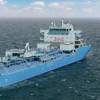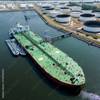North American ECA – Today
On August 1, 2012, the North American Emissions Control Area (NAECA) took effect, mandating the use of 1.0% sulfur Heavy Fuel Oil (HFO) or residual fuel oil for ships within 200 miles of the continent of North America. California has mandated the use of distillate fuel when ships are within 24 miles of its coastline since July 1, 2009. Lessons learned from California’s experience with distillate fuels may benefit operators as the next phase of NAECA comes into effect (January 1, 2015) when the International Maritime Organization (IMO) will mandate the use of distillate fuel by ships within 200 miles of the coast of North America. As that time draws near, industry observers have bantered possible compliance scenarios.
Since June 2012, several developments have helped the ship operator comply with the August 1 mandate. Foremost, the Environmental Protection Agency (EPA) provided an interpretation of fuel requirements. In guidelines released in June 2012, the minimum standard for 1.0% sulfur fuel viscosity will be not less than 11 centistokes (cst). This is significant because at the time it was thought ship operators would have a difficult time sourcing the required 1.0% sulfur fuel and have to switch over to low sulfur distillate fuel with its assorted engine compatibility issues – the same issues that California experienced.
California experienced a 300% increase in loss of propulsion incidents since its distillate fuel (viscosity 1-2 cst) regulation came into effect in 2009. The engines used aboard modern ships over 10,000 gross tons use 3.0% sulfur HFO. This fuel must be heated to flow through the fuel lines because at normal ambient temperature HFO either low sulfur or high sulfur has the consistency of tar. Distillate fuel in contrast does not require the high temperatures, and the thermodynamics of cooling metal, gaskets and seals resulted in leaks, along with filter clogging from engine buildup scrubbing. In addition, the cost savings of using HFO are significant over the use of distillate fuel which is typically around US$300 more per ton. Before the days of slow steaming, a typical containership might burn 5 to 6 tons per hour. The 1.0% sulfur HFO must be heated just like the 3.0% HFO so the engine/fuel compatibility issue was solved, at least between 200 to 24 miles off the coast of California.
The EPA recognized there may be supply problems and allowed ship operators, if the required fuel was not available in ports outside the NAECA, to simply notify primarily the EPA and Coast Guard no less than 96 hours before entering the NAECA.
Unlike the fuel switchover required 24 miles off the coast of California which typically took one to two hours, the NAECA must switch over completely to the 1.0% sulfur fuel before entering the NAECA. Det Norske Veritas (DNV) and Lloyds, for example, have calculators for estimating fuel changeover times to remain in compliance. The use of the calculators should suffice for demonstrating compliance with the 1.0% regulation in terms of a timely switchover. The Bunker Delivery Note (BDN) supplied with the just loaded bunkers will demonstrate compliance with the 1.0% sulfur rule as well. If the overseeing regime (EPA) denotes suspicious fuel switch procedures or supply issues, they may take their own sample. The problems with shipboard samples, however, can be numerous. The ship has no control over the delivery medium which means the bunker oil delivery lines, bunker barge or ship fuel tanks could have residual amounts of the high sulfur fuel leftover that could increase the sulfur content of the oil sample. Beyond this, the question of where best to take a representative sample remains a matter for debate.
At a meeting held in Tacoma, WA to discuss the NAECA on June 26, the U.S. Coast Guard advised that LSFO should meet the ISO 4259 standard. This means the sulfur content could deviate in lab analysis results from .94% to 1.06% sulfur and remain in compliance. Meanwhile, the EPA insists that LSFO should not exceed the IMO mandated 1.0% sulfur. This determination by the EPA holds sway over compliance issues. Refinery fuel blenders most probably will take the sulfur percentage to .95%; allowing for a 5% margin in analysis repeatability.
Separately, the U.S. Coast Guard maintains that the use of an incinerator to incinerate sludge greater than 1% sulfur content generated on board ship is permitted by MARPOL Annex VI (Reg 16) including in the Emission Control Area (ECA). But, the US EPA says Reg 14 only applies to the use of fuel oil, so burning sludge in an incinerator is not regulated under Reg 14, but only under Reg 16. Fuel oil and sludge oil are clearly distinguished within the MARPOL definitions. In the spirit of the ECA, the EPA would not recommend that a ship burn sludge oil or other sludge with a sulfur content that might exceed 1% within the ECA. Upon further study, a consensus will be reached with a final determination.
In order to achieve the 1.0% sulfur content of LSFO, refinery blenders are using cutter stocks which tend to have high Aluminum (Al)+Silicone (Si) levels (cat fines). The issue with increased cat fines is the impact to filters and purifiers. With poor preventative maintenance, debris from the filters and purifiers ends up in the high pressure fuel system causing worn pumps and injectors and adverse piston ring and crown groove wear – all creating more costs for the ship operator.
With California’s regulations in effect, the following scenario may unfold aboard ships trying to comply with IMO and CA regulations at the same time. At 200 miles out, the ship will use LSFO with the increased metal wearing cat fines but with good fuel viscosity which is more forgiving to worn parts. Then, at 24 miles out from California, a switch to the less forgiving distillate fuel and its well documented increased incidence of loss of propulsion (LOP) incidents could take place. Bottom line: California will continue to face the risk of an increased rate of LOP incidents that could cause an oil spill due to allision, collision or grounding.
The Author
Captain Jeff Cowan graduated from the California Maritime Academy in 1975.
(As published in the September 2012 edition of Marine News - www.marinelink.com)















